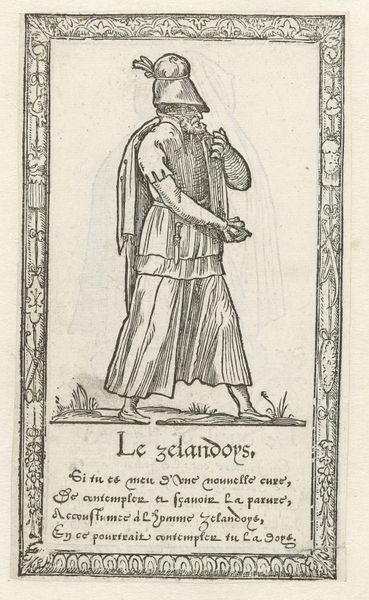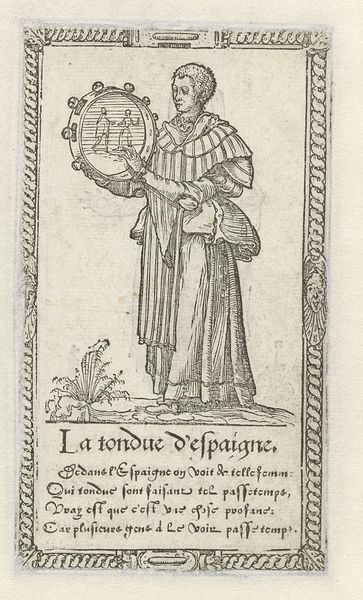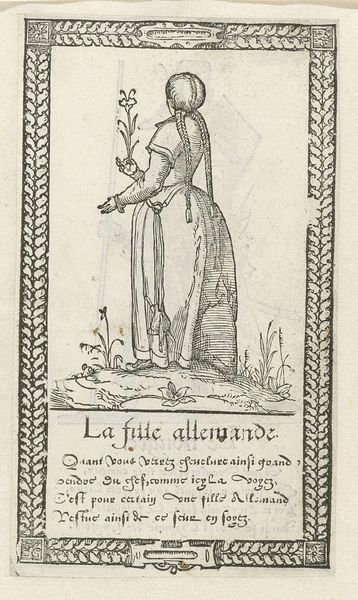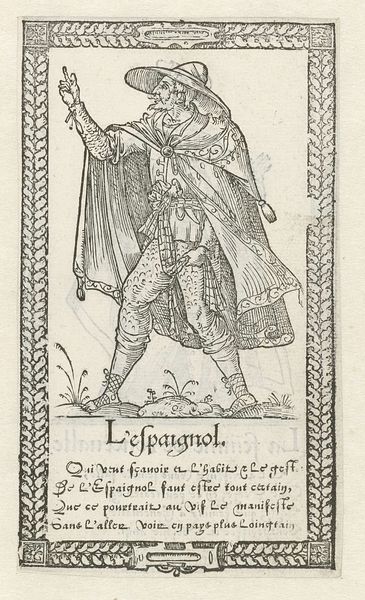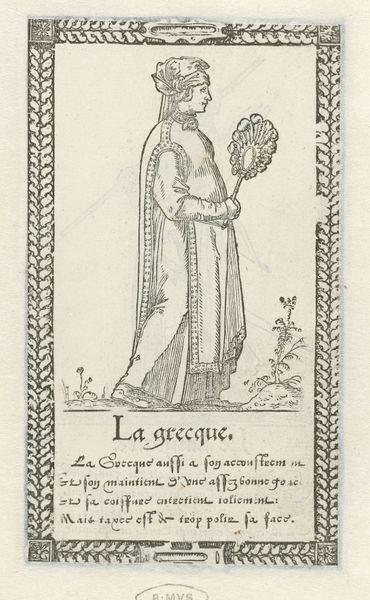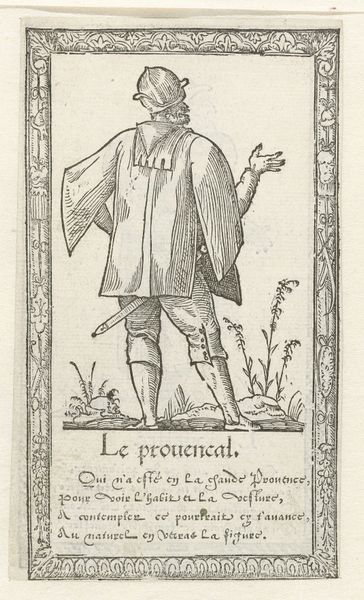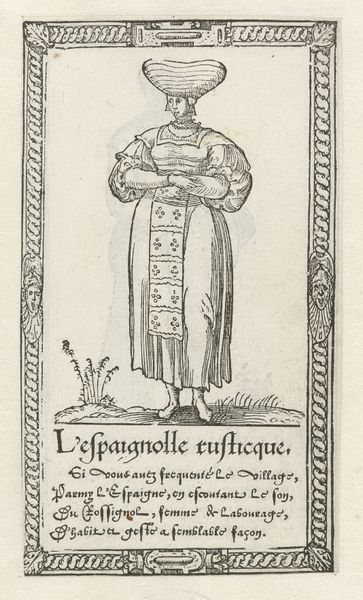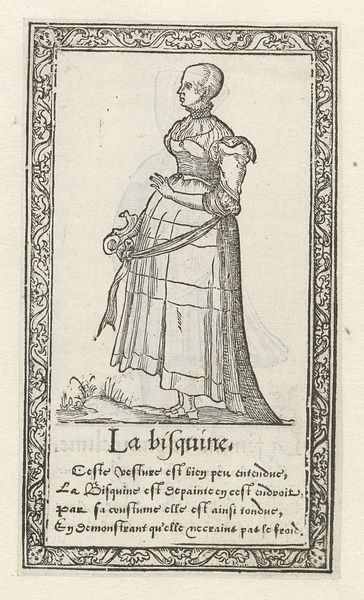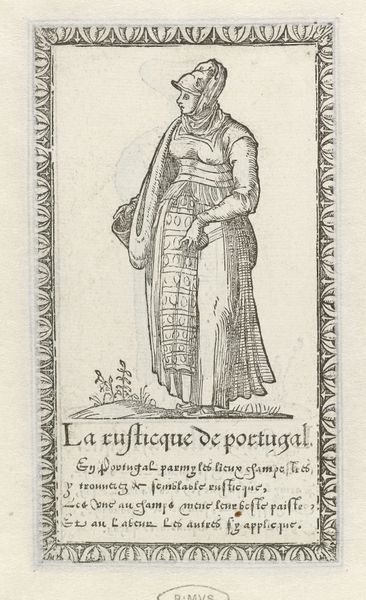
drawing, print, ink, woodcut
#
drawing
# print
#
mannerism
#
ink
#
woodcut
Dimensions: height 146 mm, width 85 mm
Copyright: Rijks Museum: Open Domain
Curator: Let's consider this Mannerist woodcut from 1562, entitled "Man uit Moskou", created by François Desprez. The use of ink lends a striking graphic quality. Editor: My initial impression is one of theatrical opulence. The man's garb—the layers upon layers of fur and ornate fabric—seems less about practicality and more about performative power. Curator: Indeed, the emphasis is less on mimetic accuracy and more on stylized representation. Observe the intricate linear patterns that define the figure and the framing border, a testament to Desprez’s mastery of the woodcut technique. The visual language clearly departs from classical ideals, embracing an artifice and exaggeration typical of Mannerism. Editor: I am also struck by how this print invites inquiry into its production process. Consider the wood blocks carefully carved to produce these striking lines and details; this would involve painstaking craftsmanship, highlighting the skilled labor of the artisan to reproduce multiples for consumption by different societal classes. Curator: Semiotically, the figure's elaborate attire signifies status and perhaps a veiled commentary on the socio-political climate of the time. His downcast gaze and bundled stance add a layer of psychological complexity. We are presented not with a straightforward portrait, but with a carefully constructed image imbued with meaning. Editor: And this raises interesting questions about cross-cultural exchange of luxury materials from East to West. To create this extravagant image of a Muscovite required particular materials such as specific woods, papers, and inks that needed to be accessed and brought together. Curator: It’s also worth considering Desprez's compositional choices. The figure dominates the frame, pushing against its boundaries, yet there’s a tension between the flat, two-dimensional plane of the print and the illusion of depth created through line and shading. Editor: To view the material history behind it gives insights to cultural and commercial conditions necessary for image-making in that era. Curator: Precisely. By analyzing Desprez’s formal techniques, we unveil the sophisticated visual strategies employed in this image. Editor: Looking closer at "Man uit Moskou", we are given opportunity to delve into materiality, production, and its social and cultural contexts, illuminating some important facets of 16th-century image making.
Comments
No comments
Be the first to comment and join the conversation on the ultimate creative platform.




